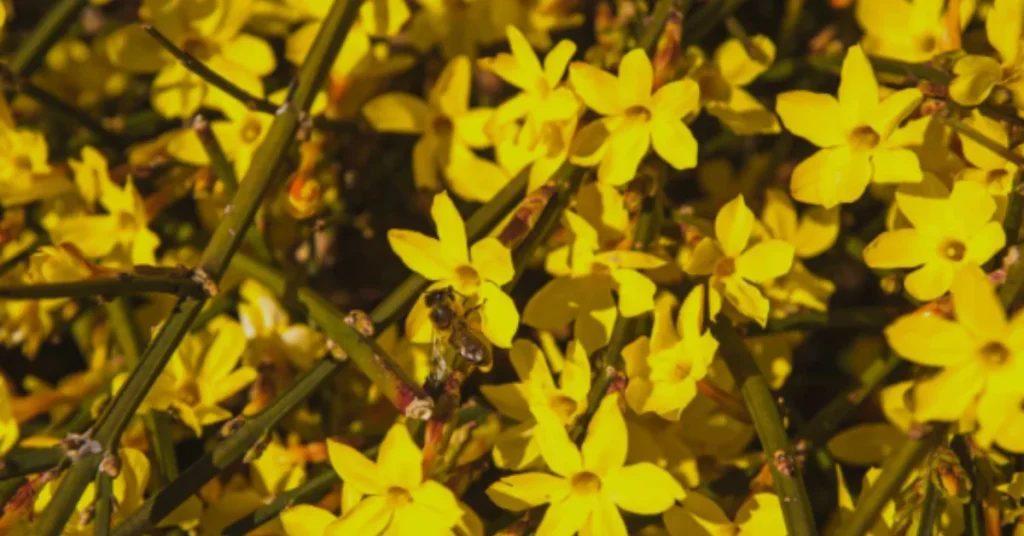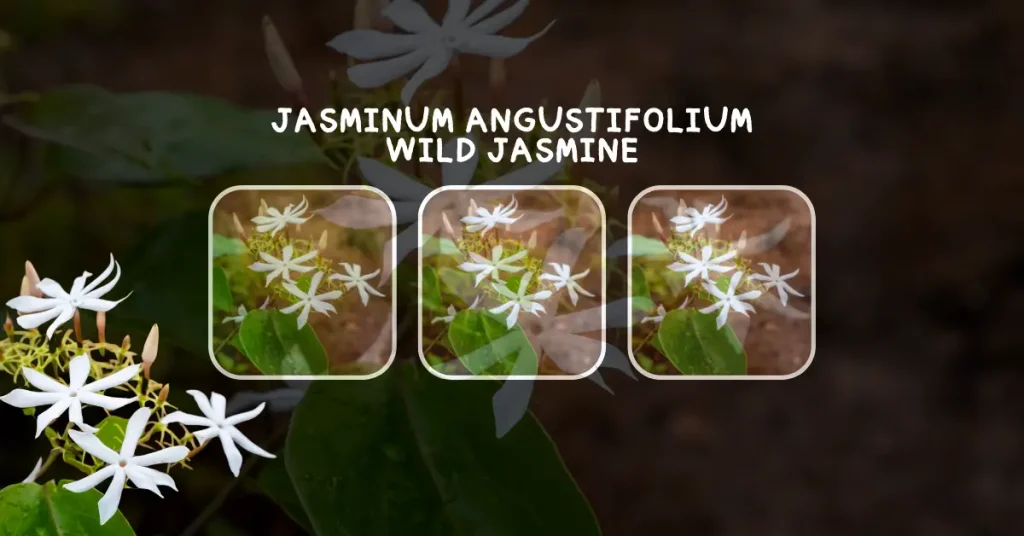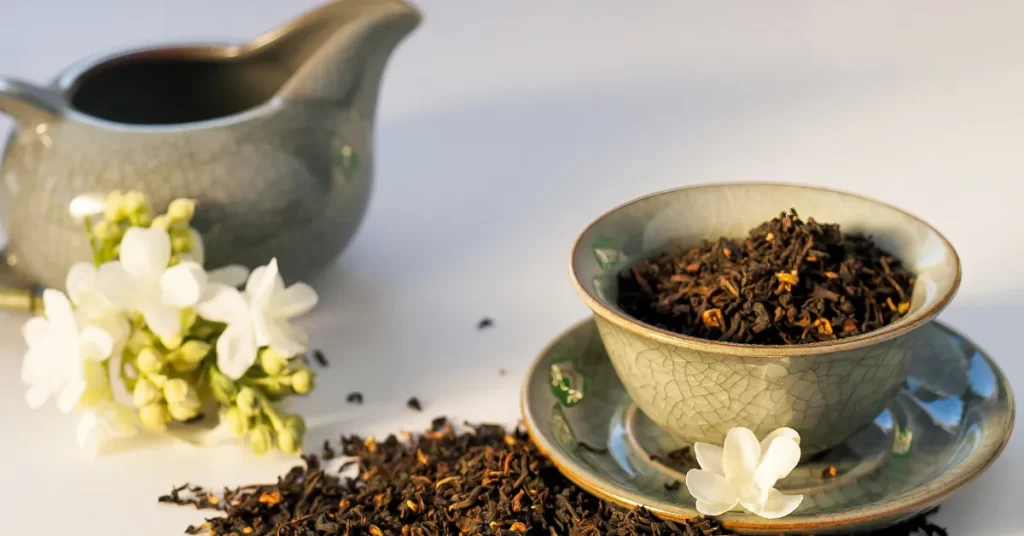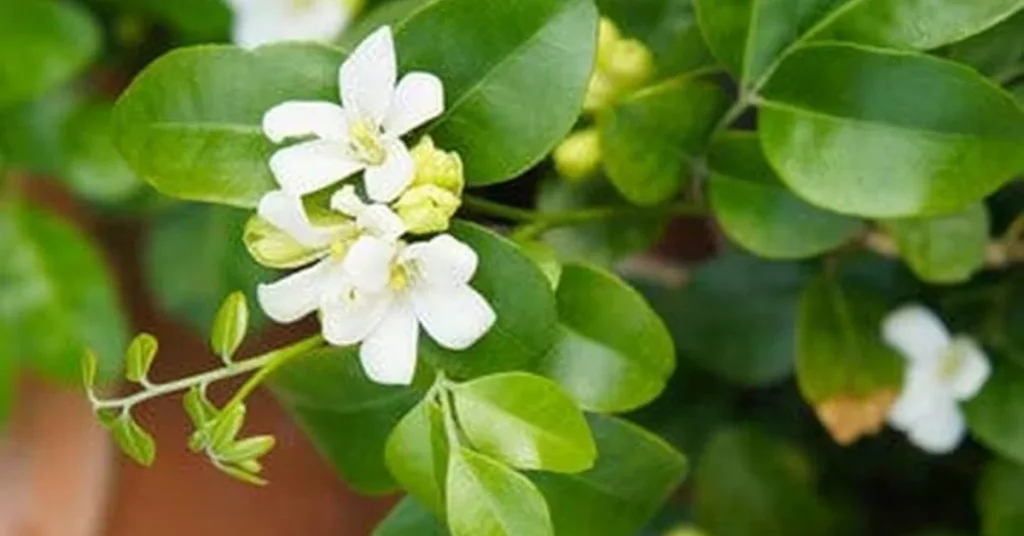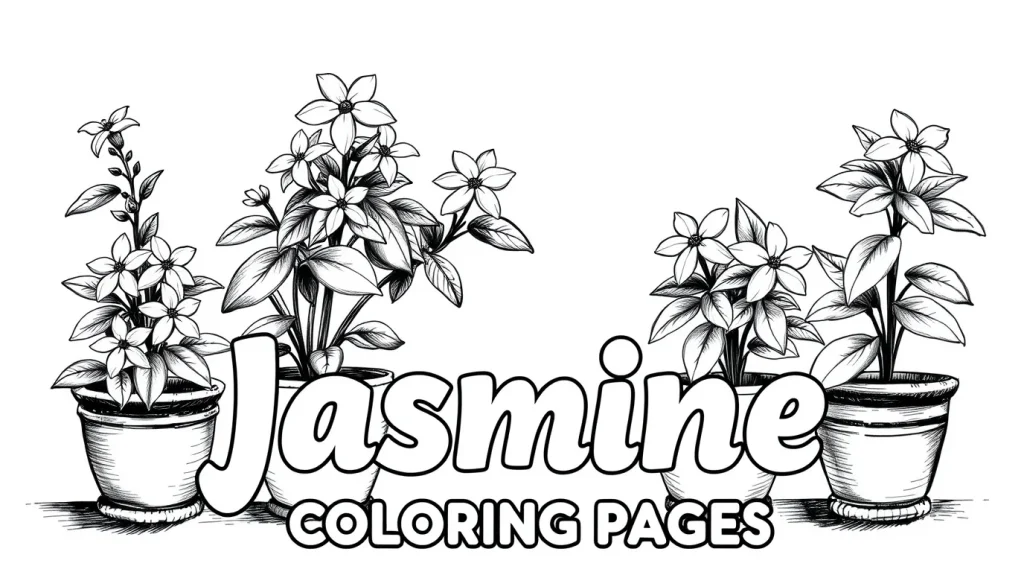Night Blooming Jasmine (cestrum nocturnum): Raat Ki Rani
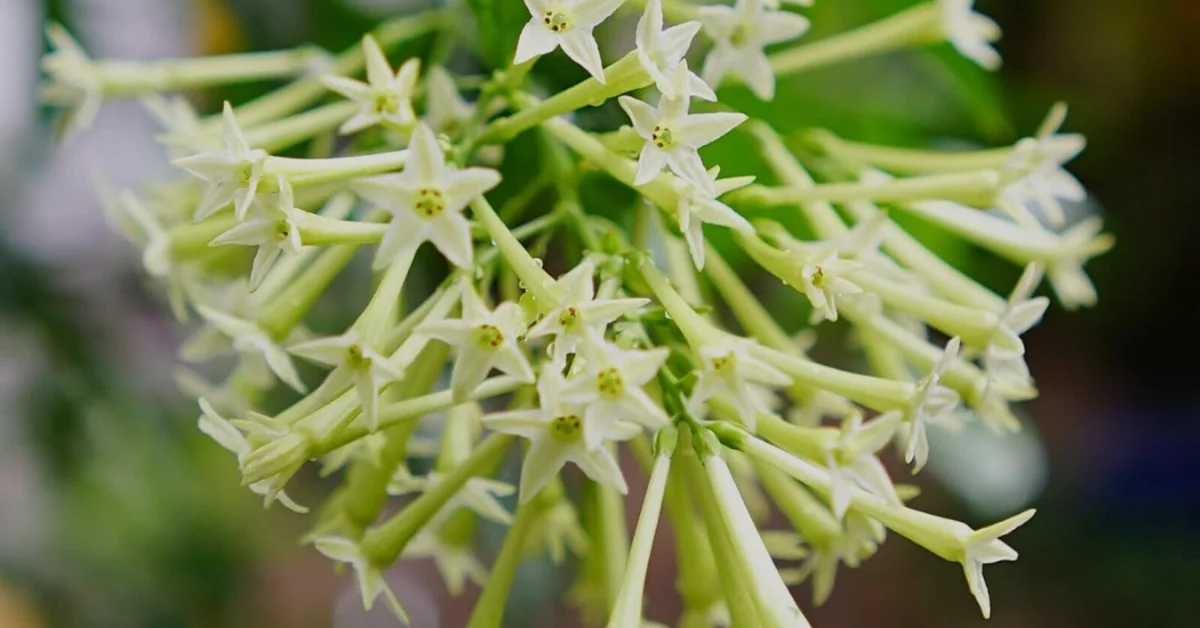
“In the stillness of the nocturne’s tune, Night blooming jasmine, sings to the moon. A floral symphony in the velvet night, Aromatic whispers, in soft delight.”
Poet described the beauty of Night Blooming Jasmine in these lines.
Let’s dive in this article to getting knowledge about characteristics, importance in cultures & Literature & Art, suitable areas, basic requirements, propagation, Pests and their management of this Lady of the Night.
Description
| Scientific Name | Cestrum Nocturnum |
| Other Names | Coral Jasmine, Lady of the Night, Night Jessamine, Night Jasmine, Night Blooming Jessamine, Queen of the Night, Night-scented Jessamine, Har Singar, Pavizhamalli, പാരിജാതം. |
| Blooming Time | May— Sep |
| Seasons | Evergreen |
| Type | Shrub |
| Height | 8’—10’ |
| Spread | 4’—6’ |
| Spacing | 48’—72’ |
| Maintenance | Low |
| Garden Uses | Beds and Borders Hedges and Screens |
| Garden Style | Coastal Garden, Mediterranean Garden, City and Courtyard |
Symbolism of Night Blooming Jasmine in Various Cultures
In many cultures, the night-blooming Jasmine symbolizes romance and mystery . Its intoxicating fragrance and flowers only appear when there are no lights on. These blooms, like the shell ginger, are often associated with wealth and long-lasting bonds in some cultures.
Night Blooming Jasmine in Literature and Art
It is a myth that this shrub was princess, named Parijataka. She became affectionate with sun. Unfortunately, she was abandoned. So she blistered herself. Impressively, the shrub grow from her ashes. So, the plant only flowers at night because it can’t stand for sun.
Suitable Areas
Night blooming jasmine is native to West Indies and settled in south east countries. In India and Pakistan, it is locally known as Raat Ki Rani because of its dominant flowers fragrance at the night.
Is jasmine and Raat Ki Rani same?
No they are not same. They belong to different botanical genera. Jasmine is a genus of olive-family and Night blooming jasmine is specie of Solanacea family.
Popular growing areas for Cestrum nocturnum include:
- Tropical regions: It thrives in areas with warm temperatures year-round, such as tropical climates found in parts of South and Central America, Southeast Asia, and Africa.
- Subtropical regions: It also grows well in subtropical climates with mild winters and hot summers, including parts of the southern United States, Australia, and southern China.
In USDA hardiness zones, Cestrum nocturnum is suited for zones 9 through 11. So if you live in Florida, southern Louisiana, Texas, Hawaii and southeast California, you are good to grow and enjoy fragrance of Queen of the Night.
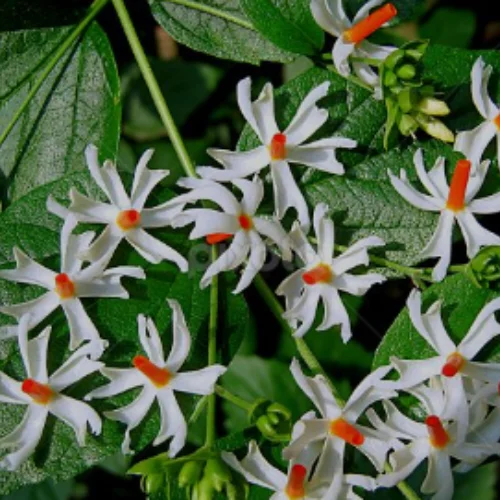
Har Singar Facts
Har Singar holds cultural and religious significance and is often used in making garlands, and in religious rituals and ceremonies in India. Various parts of the Har Singar plant, including the leaves, flowers, and bark, are used for their medicinal properties. They are believed to have anti-inflammatory, analgesic, antipyretic, and antioxidant properties. Har Singar treats various ailments such as fever, arthritis, rheumatism, digestive disorders, and skin conditions.
Basic Requirements
Night-blooming Jasmine is a very friendly plant that is easy to grow and maintain. If basic requirements (well aerated soil, proper sunlight, watering and pruning)are fulfilled, gardeners can enjoy blooms in long run. lets have a look at basic requirements.
Sunlight
Cestrum Nocturnum thrives best in in partial to full sun. Find a spot in your garden where it can bask in the sun’s rays for at least six (06) hours a day. Keep an eye on any nearby trees or structures that could block the sunlight. Too much shade results in fewer blooms.
If you have a shady area where you’d like to grow jasmine, Arabian jasmine could be a good option to consider.
Watering Needs
I do myself a simple technique to acess the watering needs. Before watering, I do check the soil moisture by inserting a finger into the soil. If the top inch feels dry, it’s time to water.
Remember, during the growing season, typically spring and summer, water the plant regularly and keep the soil consistently moist but not waterlogged. In hot or dry climates, you may need to water more frequently.
Avoid overirrigation. Excessive watering may welcome rot root disease and other fungal diseases.
Soil
Night Blooming Jasmine isn’t picky about soil, but it does prefer a well-draining soil enriched with organic matter. You can use regular potting soil or mix in some sand with neutral ph level of 6.6 to 7.5. Just make sure it’s not too compacted or heavy clay soils.
Warning
Cestrum Nocturnum has widely spreading roots. So make sure to give them at least four feet apart to grow properly.
Required Temperature
As night Blooming Jasmine thrives in USDA zones 9 to 11, they knock out in warm temperatures with high humidity.
Settled plants are hardy to 25 degrees Fahrenheit. If you have a junior, it would need above 35 degrees Fahrenheit for survival.
For those who reside in cooler areas and are looking for a winter season landscape, winter jasmine (Jasminum nudiflorum) is a good option with low maintenance efforts.
Fertilizer
Fertilizers, both macro and micro are necessary for overall vegetative growth and full bloomings. Lack of essential nutrients is one of the main cause for less blooming. A gardeners must look at the nutrient deficiency symptoms and feed the fertilizers.
Matters in Question
Like Yellow Jasmine, the night Blooming Jasmine is not worth eating. All parts of the plant are toxic for humans and your furry friends, dogs and cats. In case of ingestion, you may face gastrointestinal symptoms.
Apart from ingestion, the aroma triggers respiratory issues in some individuals who are allergic. So be careful!
Let us discuss the pests and diseases that can affect the growth of your Night lady.
Pests
Night Blooming Jasmine may face attacks from mealy bugs, those tiny pests that suck sap from its leaves and stems, causing damage. Keep an eye out for them—they look like white, fluffy spots. Aphids and caterpillars are common that harm Lady of Night. Spider mites (0.4 mm long.) and scale insects are also potential insects that can harm if not treated.
Solutions
- To get rid of them, use a cotton swab dipped in rubbing alcohol to wipe them away.
- Another trick is to spray your plant with a mixture of water and insecticidal soap.
- Neem oil is also an effective option for getting rid of these pests.
Read in detail: Pests and Their Control
Diseases
If you notice leaves turning yellow or brown, spots appearing on them or sticky deposits on the leaves, there might be the appearance of disease.
| Disease | Symptoms | Treatment |
|---|---|---|
| Powdery Mildew | White powdery spots on leaves | Prune affected parts, apply fungicide |
| Leaf Spot | Circular brown spots on leaves | Prune affected parts, apply fungicide |
| Botrytis Blight | Gray fuzzy mold on flowers and leaves | Prune affected parts, improve air circulation |
| Downy Mildew | Yellow patches on leaves, fuzzy gray growth | Prune affected parts, apply fungicide |
| Bacterial Leaf Spot | Water-soaked spots, yellowing leaves | Prune affected parts, apply copper-based fungicide |
| Root Rot | Yellowing leaves, wilting, stunted growth | Improve drainage, avoid overwatering |
| Sooty Mold | Black, velvety mold on leaves | Treat underlying insect infestation, improve airflow |
| Phytophthora | Wilting, yellowing leaves, root rot | Improve drainage, avoid overwatering, fungicide |
Try adjusting your watering habits to avoid soggy soil, and make sure your plant gets enough sunlight and airflow to keep it healthy. If you spot signs of disease, prune away any affected parts and treat your plant with a fungicide or treat organically.
Pruning
The best time of pruning this plant is right after the flowering season ends. Before fall, it is the month of September as according to my experience. Pruning at right time gives you a progressed plant.
What to Care About During Pruning Night Jasmine
- Prune after flowering season.
- Trim away any dead, diseased, or damaged branches.
- use sharp and clean pruning tools to make clean cuts.
- Be mindful not to prune excessively.
Propagation of Night Blooming Jasmine
Healthy cuttings can be used for propagation easily.
Here’s a step-by-step guide to propagating night blooming jasmine through cuttings:
Step-1: Preparation
- Select a healthy, non-flowering stem from the parent plant.
- Prepare a clean, sharp pair of garden shears or scissors.
- Prepare your rooting hormone.
- Prepare a pot or container filled with a well-draining potting mix.
Step 2: Taking the Cutting
- With your garden shears or scissors, make a clean cut just below a leaf node (the point where a leaf attaches to the stem). The cutting should be around 4-6 inches long.
- Remove any leaves from the lower one-third to one-half of the cutting.
- Dip the cut end of the stem into rooting hormone to promote root development.
Step 3: Planting the Cutting
- Make a hole in the potting mix with a pencil or your finger.
- Insert the cut end of the stem into the hole, ensuring that at least one or two leaf nodes are buried beneath the soil surface.
- Gently firm the soil around the cutting to provide support.
Step 4: Caring for the Cutting
- Water the cutting thoroughly, ensuring that the soil is evenly moist but not waterlogged.
- Place the pot in a warm, bright location with indirect sunlight.
- To maintain a high level of humidity around the cutting, you can cover the pot with a clear plastic bag.
- Check the cutting regularly to ensure that the soil remains moist. Mist the leaves with water if they start to wilt or dry out.
Step 5: Root Development
- Approximately in eight (08) weeks, roots are developed. Monitor the signs of root development.
- Once roots have developed, you can transplant the cutting into a larger pot or directly into the outdoor garden.
- Water the newly transplanted cutting thoroughly to help it establish itself in its new location.
Final Thoughts
The Night Blooming Jasmine, or Lady of the night as it is also called, produces a beautiful aroma when it blooms. This happens about four times a year. It is definitely a lovely addition to any home. Night Blooming Jasmine can be a rewarding experience if you care for it properly. Appropriate soil, adequate temperature and watering and fertilizing can make it a beautiful landscape. The important thing is that all the plant parts are toxic, so keep yourself, your babies and pets away for eating.
FAQs
Q: Can Night Bloom Jasmine plant indoor?
Night Bloom jasmine is a popular indoor plant. You just need to place your pot at right position. Pot must be placed in a sunny window for its optimal growth.
Q: What are the disadvantages of night-blooming jasmine?
The main disadvantage of the night blooming jasmine is that all plant parts are toxic. The night time fragrance may cause dizziness, difficult breathing and allergy in some individuals.
Q: Does night-blooming jasmine need full sun?
No. It requires partial to full sun.
Q: Why Night jasmine called Raat Ki Rani?
The flower blooms at night and due to this quality it has been named as “Raat ki Rani”, Queen of the Night.

I am Yasir Riaz, an Agronomist for more than a decade. Helping local farmers and Gardeners to improve their crops and Gardens and overall productivity. In addition to my work in agriculture, I have also delved into the digital world as an SEO writer and blogger. Through my blog, I aim to educate and inspire others about the Chameli Flower (Jasmine).

